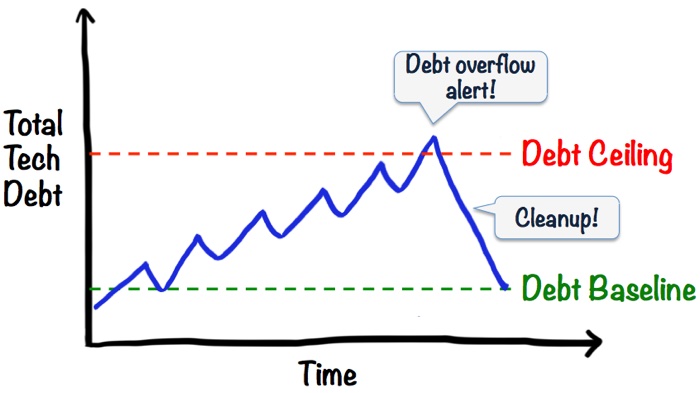Shaun McCormick describes Why the way we look at technical debt is wrong:
Technical debt is ok, and often a solid product strategy. The importance is getting to market. When launching a new system or feature, focus your effort and time on areas of the product that need to be agile, and move quickly through areas that don’t. Later, if the product proves that it can drive revenue, you can revisit those areas and improve if they need to scale.
This is an excellent sentiment, and I agree 100% in theory. The problem is that in most organizations, “later” = “never.” Or as Jeff Gothelf puts it, the biggest lie in corporate america is Phase 2.
That’s why I really like Henrik Kniberg’s concept of a “technical debt ceiling.” Read his post Good and Bad Technical Debt (and how TDD helps) for the whole explanation, but here’s a diagram that explains his point:

Source: Henrik Kniberg
This forces teams to pay attention to technical debt, and make a conscious effort to reduce it when it becomes a problem.